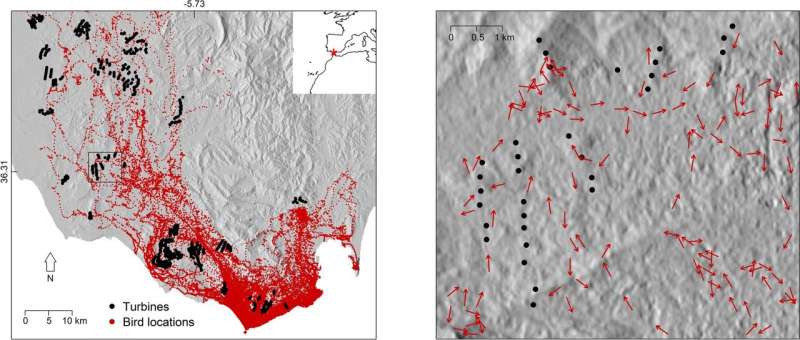
Wind and solar are two renewable energy technologies being pushed as the solution to power human societies. Wind turbine have been on a collision course with wildlife. Questions about the feasibility of wind as a cornerstone of a global clean energy policy have been raised by the death of birds and other flying animals by impact with the turbine blades. A pair of animal tracking studies from the Max Planck Institute of Animal Behavior and the University of East Anglia, UK, have provided detailedGPS data on flight behavior of birds that are susceptible to collision with energy infrastructure. The first large-scale study of 1,454 birds from 27 species has identified a few areas in Europe where birds are particularly at risk from wind turbine and power lines. The second talked about how birds will avoid turbines if they are within one kilometer. Both studies provide detailed biological data needed to expand renewable energy infrastructure with minimal impacts to wildlife.
The global commitment to transition to renewable energy from fossil fuels has led to an increase in wind energy generation. Europe is projected to have four times the wind energy capacity of the Middle East and North Africa by the year 2050.
We know from previous research that there are many more suitable locations to build wind turbines than we need in order to meet our clean energy targets, according to the lead author.
There are collision hotspots in Europe.
An international team of 51 researchers from 15 countries collaborated to identify the areas where birds would be more sensitive to wind turbine or power line development. The study used gps location data from 65 bird tracking studies to understand where they fly more frequently at danger height, defined as 10 to 60 meters above ground for power lines and 15 to 135 meters for wind turbines.
The vulnerability maps show that the collision hotspots are concentrated within important migration routes along coastlines and near breeding locations. The Western Mediterranean coast of France, Southern Spain and the Moroccan Coast are included. The data collected related to 1,454 birds from 27 species. The European eagle owl, whooper swan, Iberian imperial eagle and white stork are all at risk of collision. In high sensitivity areas, new wind turbine and transmission power lines should be minimized, and any developments which do occur will likely need to be accompanied by measures to reduce the risk to birds.
Birds are near turbines.
As well as providing location and flight height, gps loggers open up an additional frontier in efforts to better plan energy infrastructure.
The black kite is a bird that migrates through the Strait of Gibraltar, a narrow straight between southern Spain and North Africa.
The study looked at the gps data from 126 black kites as they approached the wind turbine. Birds avoided flight paths to turbines as they flew closer to them. When the wind was blowing towards the turbine, the birds started to deviate from the turbine one kilometer away, but this effect was even more pronounced within 750 meters.
It is difficult to collect gps data from the interaction between birds and turbines. You need to tag many animals to increase the chances of recording their behavior. Our dataset is so rare because of this. Fortunately,GPS tracking studies are becoming more common and hopefully in the near future we will be able to gather data of this sort for other soaring bird species.
More information: Carlos D. Santos et al, Factors influencing wind turbine avoidance behaviour of a migrating soaring bird, Scientific Reports (2022). DOI: 10.1038/s41598-022-10295-9In the Journal of Applied Ecology, Jethro G. Gauld and his co-authors discuss the sensitivity and vulnerability of birds to collision risk from energy infrastructure interactions in Europe and North Africa. There is a book called 10.1111/1365-2664.14160.
Journal information: Journal of Applied Ecology , Scientific Reports Citation: Can wind turbines and migrating birds coexist? (2022, April 20) retrieved 20 April 2022 from https://phys.org/news/2022-04-turbines-migrating-birds-coexist.html This document is subject to copyright. Apart from any fair dealing for the purpose of private study or research, no part may be reproduced without the written permission. The content is provided for information purposes only.